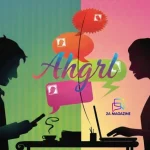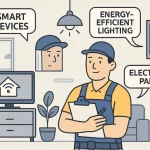If you’ve ever gone into a negotiation nervous about price, worried a client would say no, or caught yourself rambling to fill awkward silences, you know how brutal these moments can feel. I used to hate them-until I built a negotiation system that made these calls not just manageable, but sometimes even enjoyable. The turning point: using ChatGPT and a simple prompt loop to clarify what mattered, rehearse what to say, and stop second-guessing myself in real time.
Here’s the detailed, non-glossy story of how I landed my first £10K freelance project-without panic, bluster, or needing to be a “natural negotiator.”
Why My Old Negotiation Tactics Weren’t Working
Like most freelancers, I started out winging it. My “strategy” was to talk up my experience, listen to what the client said they wanted, and nervously throw out a price that was a little higher than my gut said-then prepare to drop it the second they hesitated.
I’d end up with:
- Projects where I felt underpaid and overworked
- Endless back-and-forth on deliverables and scope
- “Ghosted” emails when I stood firm on price
What I needed was:
- A structure for the call (not just “be confident”)
- Better questions, so I could understand what mattered to the client (and show I’d done my homework)
- A way to practice saying hard things (“That’s below my minimum rate”) without freezing up
My New Approach: Letting ChatGPT Prepare Me Like a Real Coach
Here’s what changed. Before every negotiation call, I started prepping with a ChatGPT prompt like this:
“Pretend you’re a freelance business coach. I’m about to discuss a £10,000 branding project. What questions should I ask first? What signals will help me know if they can actually pay? How do I hold my rate if they push back?”
ChatGPT spit out a practical checklist-not magic, just reminders:
- Start by recapping their goals and repeating back what you’ve heard
- Ask for their timeline, decision-making process, and any past project failures (“What didn’t work last time?”)
- If they hesitate at your price, use “Based on what you’ve shared, here’s why this is the right investment…” instead of “I can go lower”
I scribbled these down, kept them on a sticky note next to my laptop, and glanced at them when nerves hit.
Related insight: This article dives even deeper into the topic.
Research, Not Guesswork: Using AI to Know My Client Better
The biggest difference in this project? I stopped treating every negotiation like a cold call.
Using Gemini, I did 10 minutes of real research:
- Pulled their latest press releases (they were expanding fast)
- Looked at LinkedIn to see new hires in marketing (likely budget available)
- Checked their competitors’ websites for clues about recent rebrands
This gave me concrete reasons to talk about impact (“You’re moving into new markets, so your brand identity needs to be strong and clear”)-not just “I’m good at design.”
The Call: How a Simple Prompt Loop Kept Me Calm and On Track
On the call, whenever I started to ramble or get nervous, I glanced at my prompts:
- “Pause and ask: What would make this project a win for you in 6 months?”
- “If they ask about price, don’t jump to discounts. Ask: What’s your budget range? What’s held you back from investing before?”
A few things happened:
- The client opened up about a previous agency that over-promised and under-delivered
- My fixed-price felt safer to them because I explained each step
- When they said, “That’s more than we were thinking,” I replied (scripted in advance):
“Totally understand. Most of my clients feel that way until we break down what you get and what happens if you cut corners.”
We both took a breath. They asked questions. I answered slowly, even if it meant a pause.
How I Closed Without Pressure-And Followed Up Like a Pro
Instead of chasing after the call, I sent a clear, short summary by email. I ran my draft through Claude (for clarity and a human tone):
- Recapped what we agreed
- Listed next steps with clear dates
- Made the price feel like a plan, not a gamble
The reply:
“You made this the easiest decision we’ve had all quarter. Send the contract.”
Making the System Repeatable: Where Chatronix Came In
Once this process worked, I didn’t want to lose it.
Now, I save all my best prompts, research checklists, follow-up scripts, and negotiation wins in my Chatronix workflow.
Why? Because I don’t trust memory. I trust systems.
- I tag every call prep prompt and negotiation script
- My proposal templates and “how to hold my rate” scripts are a click away
- I track which approaches lead to quick closes, which need a rethink
The next time a £10K project comes up, I’m not improvising-I’m iterating. If you want a negotiation process you can improve every time (instead of always starting from scratch), visit Chatronix website and save yourself hours of stress.
My Real-World Negotiation Stack:
| Stage | What I Used | What It Delivered |
| Call Preparation | ChatGPT prompt notes | Checklist, better questions, calm |
| Client Research | Gemini + competitor review | Budget clues, priorities, leverage |
| Proposal & Follow-up | Claude + email script | Clear, concise, closes with trust |
| Systemisation | Chatronix | Prompt library, repeatable process |
5 Prompts That Helped Me Negotiate Without Stress
- “What questions do I ask to make sure this client is serious about a £10K investment?”
- “Give me three ways to hold my rate if a client pushes back without sounding defensive.”
- “How do I calmly pause the call if I need more time to think?”
- “Draft a one-paragraph email to recap a negotiation call, focusing on agreed next steps.”
- “If the client wants to delay, what’s a kind but firm way to keep momentum?”
<blockquote class=”twitter-tweet”><p lang=”en” dir=”ltr”>ChatGPT is a GENIUS marketer.<br><br>I turned it into my personal marketing assistant with these 10 powerful prompts that you can now use for automating your tasks:
Takeaway: Negotiation Isn’t About Being Pushy-It’s About Being Ready
Landing my first big-ticket project wasn’t about clever tactics or charisma.
It was about being prepared, honest, and human. ChatGPT didn’t do the work for me-but it helped me slow down, clarify my value, and walk away from calls proud of how I showed up.
If you’re sick of dreading client negotiations, try scripting your next call.
Use your prompts, build your library, and let every win make the next one easier.
And if you want to stop reinventing the wheel, check out how Chatronix makes it simple to store and improve your negotiation game-get started.
No more stress. Just a process that works.
If you enjoyed this post, you’ll love what’s featured on 2A Magazine.







